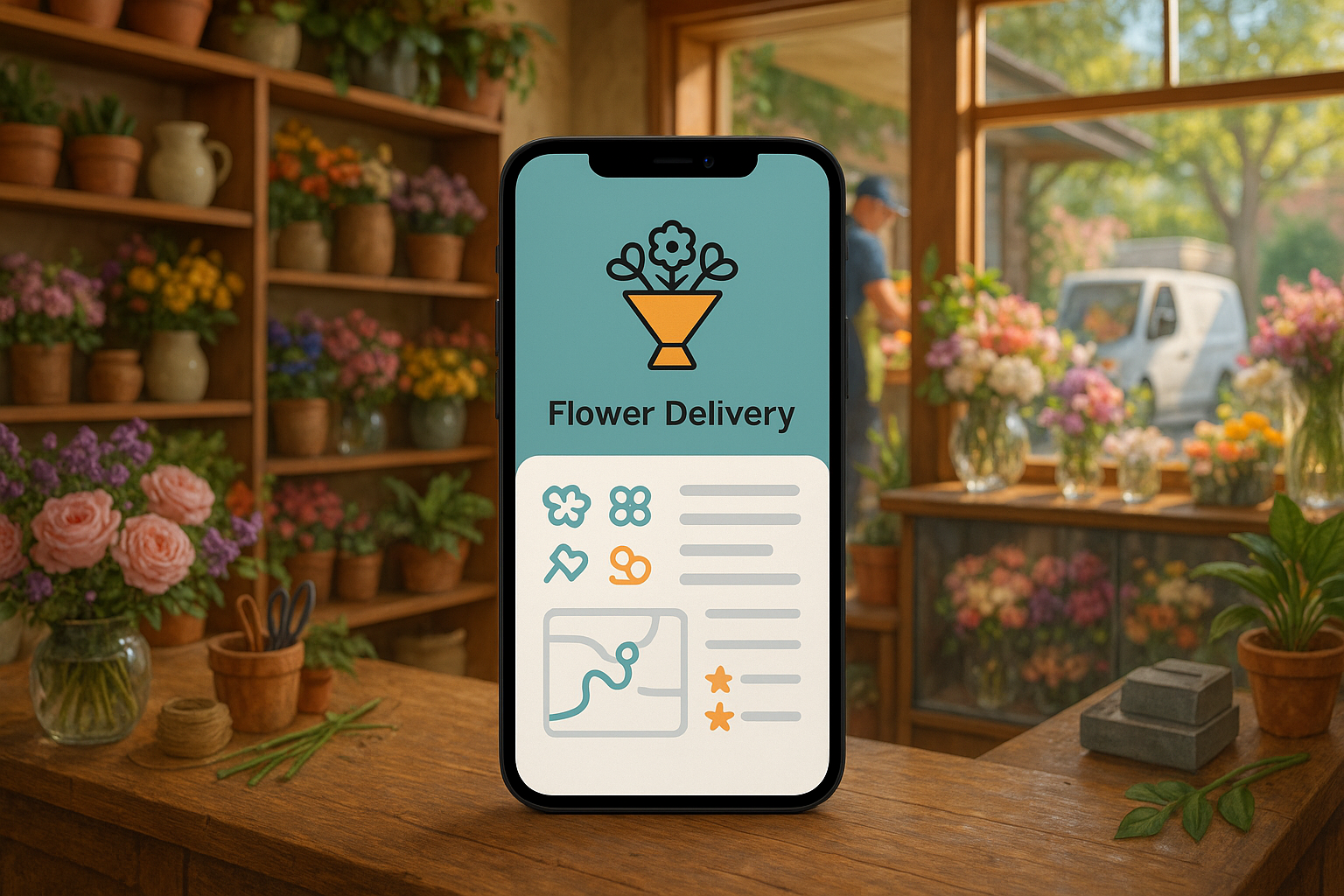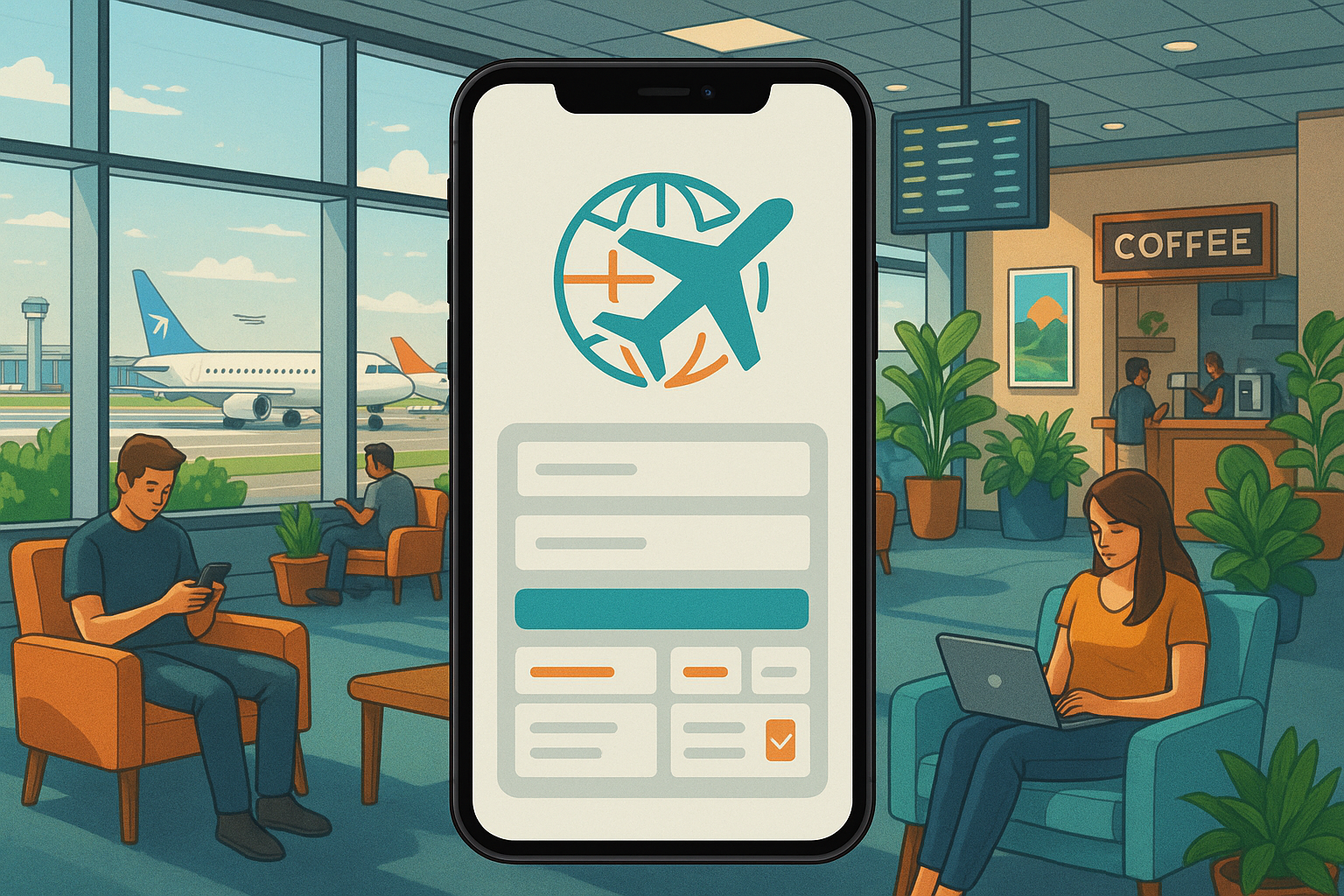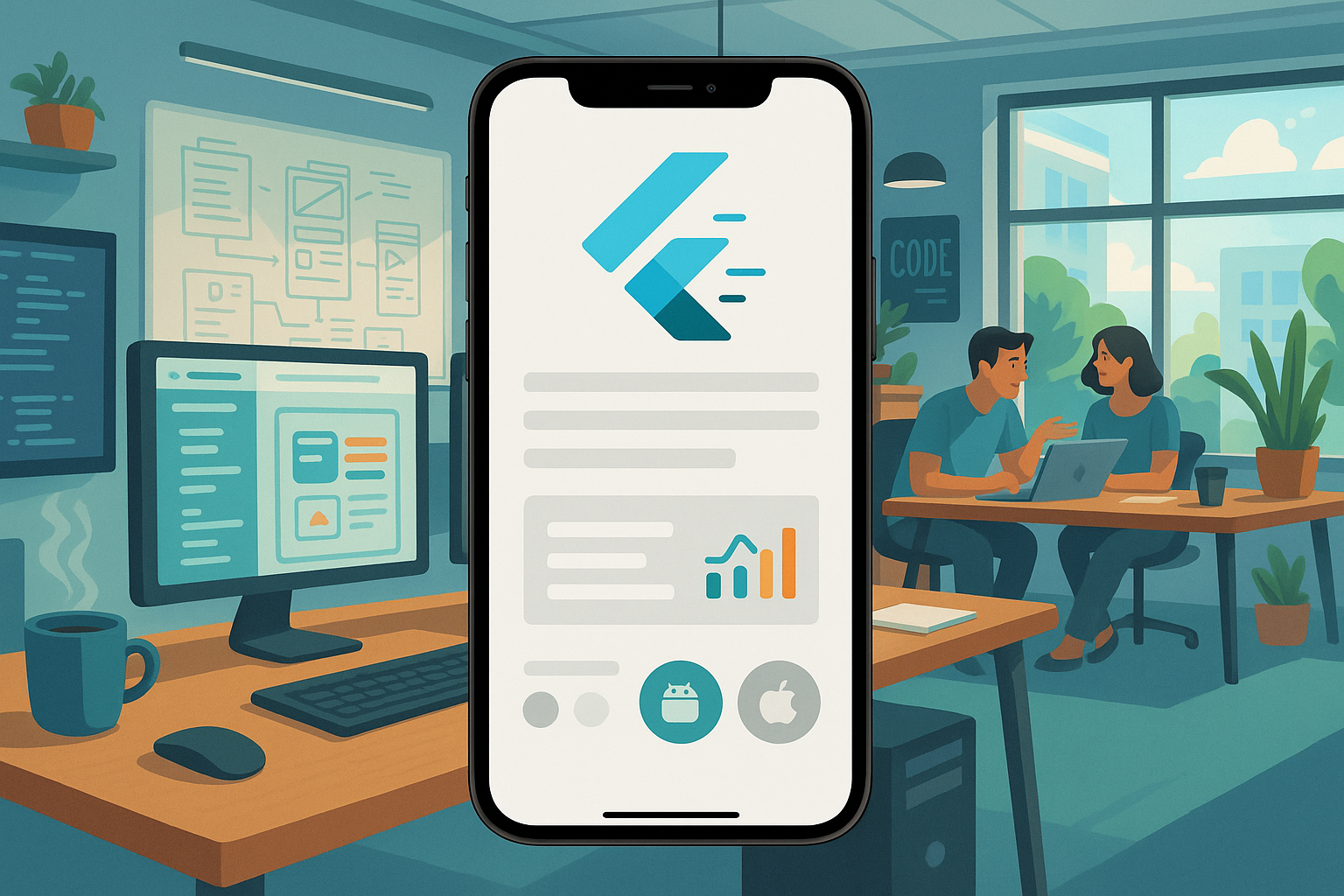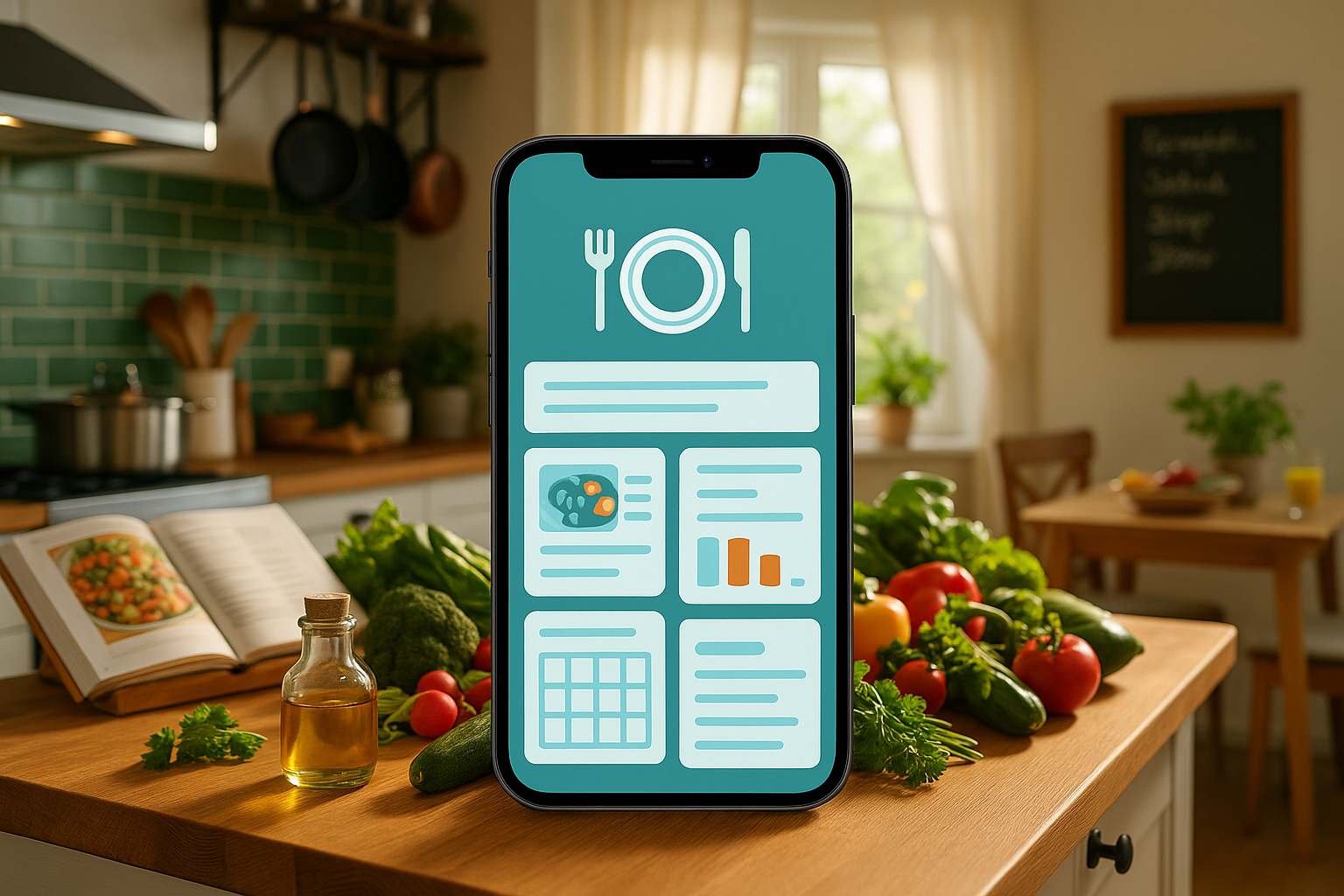Introduction
In an age dominated by on-demand services, the simple act of sending flowers has been transformed. Customers now expect the same level of convenience, speed, and transparency from their local florist as they do from their ride-sharing or food delivery service. This has created a massive opportunity for businesses in the floral industry to expand their reach and streamline their operations through a dedicated mobile app.
However, developing a flower delivery app is a surprisingly complex undertaking. It goes far beyond creating a simple e-commerce storefront. The real challenge lies in building a robust, three-sided platform that seamlessly connects customers, administrators, and delivery agents in real time. This involves intricate logistics, sophisticated tracking systems, and flawless process automation, all of which can be daunting to develop in-house.
This comprehensive guide will walk you through the essential aspects of flower delivery app development. We will explore the core components of a successful app, the technical challenges you will face, the different business models you can adopt, and the potential costs involved. Furthermore, we will introduce you to top development companies that can bring your vision to life. As a leading US-based, AI-powered app development firm, we at MetaCTO have extensive experience building complex, scalable mobile solutions. We understand the unique hurdles of on-demand delivery and are here to help you navigate them, transforming your concept into a market-leading application.
What is a Flower Delivery App?
At its most fundamental level, a flower delivery app is a mobile platform designed to facilitate the ordering and delivery of floral arrangements and related gifts. However, a truly effective application is not a single piece of software but an interconnected ecosystem of three distinct yet integrated components. A seamless delivery experience for the end customer is only possible when these three prerequisites—the customer app, the admin dashboard, and the agent app—work in perfect harmony.
The Customer App
This is the user-facing component that customers interact with. Its primary goal is to provide an intuitive, engaging, and effortless experience from browsing to post-delivery feedback. Essential features of the customer app include:
- Login and Registration: The gateway to the service. Users must be able to sign up easily using an email address, phone number, or through social media integration for maximum convenience.
- Delivery and Pickup Scheduling: Flexibility is key. This feature allows customers to choose a specific delivery window or pickup time that fits their schedule, which is crucial for time-sensitive gifts like flowers.
- Order Tracking and Status: Modern consumers demand transparency. The app must provide real-time tracking of an order from the moment it is confirmed. Customers should receive instant updates for every delivery stage, including confirmed, in-process, shipped, and delivered. This visibility builds trust and reduces customer anxiety.
- Cost Estimation: There should be no surprises at checkout. After a customer selects their items, the app must provide a clear and comprehensive cost estimate, including the price of the flowers, delivery charges, and any applicable taxes.
- Push Notifications: A vital communication tool. Push notifications serve two purposes: marketing (notifying users of offers and discounts) and operations (providing real-time updates on order status and delivery progress).
- Flexible Payment Methods: To cater to a wide audience, the app must integrate with various payment gateways. This allows customers to pay via their preferred method, whether it’s a credit/debit card, net banking, digital wallet, or even cash on delivery.
- Reviews and Ratings: This feature closes the feedback loop. It empowers customers to share their experience with the product and service, providing valuable insights for the business and building social proof for future customers.
The Admin Dashboard
This is the command center of the entire operation. It is a powerful web-based or desktop application that gives managers and business owners the tools to oversee and optimize every aspect of the delivery service. Essential features include:
- Route Optimization: This is far more than just finding the shortest path. A sophisticated route optimization engine selects the most cost-efficient and quickest route by considering multiple variables like traffic congestion, the number of stops, vehicle load capacity, and driver proximity.
- Fleet Management: This feature provides deep insights into operational efficiency. It allows managers to evaluate fuel expenditure for specific routes and analyze the performance of individual delivery agents, helping to control costs and improve service quality. It enables managers to import customer addresses and create optimal delivery schedules based on driver skills and location.
- GPS Tracking: Managers need complete visibility of their fleet. GPS tracking provides the real-time location of every delivery agent and the live status of their current orders, allowing for proactive problem-solving and better coordination.
- Analytics: Data-driven decisions are crucial for growth. An analytics dashboard allows managers to monitor key business metrics in real-time, such as average delivery time, turnaround time, fuel costs, and driver efficiency. These insights are invaluable for increasing operational efficiency and profitability.
The Agent App
This is the mobile tool for the delivery drivers, designed to make their job as efficient and straightforward as possible. Must-have features of the agent app are:
- Availability Management: Agents must be able to mark their status as “On Duty” or “Off Duty,” giving the system clear information about who is available to take on new delivery tasks.
- Task Management: The app should allow agents to easily accept or reject new delivery assignments. Once a task is accepted, the app provides all necessary information, including customer details, pickup and delivery locations, and contact information.
- Navigation: Integrated navigation with optimized routes is essential. This feature guides agents through the most efficient path determined by the admin dashboard’s route optimization engine, ensuring timely deliveries.
- Communication: The app must facilitate seamless, in-app communication between the agent, the customer, and the admin. This is critical for resolving issues on the fly, such as an incorrect address or a customer not being available.
- Proof of Delivery: To prevent disputes and confirm successful deliveries, the app should allow agents to collect proof of delivery. This can be done by capturing a signature, taking a photo of the delivered item at the location, adding notes, or scanning a barcode.
- Earnings: Transparency for agents is just as important as it is for customers. This feature allows drivers to view a clear breakdown of their earnings from completed tasks, fostering trust and motivation.
Reasons It Is Difficult to Develop a Flower Delivery App In-House
While the features listed above may seem straightforward on paper, integrating them into a reliable, scalable, and seamless system presents significant technical challenges. Many businesses underestimate this complexity, leading to costly and time-consuming development cycles when they attempt to build an app entirely in-house. Here are some of the primary difficulties:
1. Achieving Granular, Real-Time Visibility
The core promise of an on-demand app is instant information. A customer wants to know exactly where their order is, an admin needs to know the location of every driver, and a driver needs the latest order details. Achieving this “instant, granular level of visibility across stakeholders” requires a sophisticated and reliable integration between all three components of the app ecosystem. Information must be synced in real-time, which is a complex engineering problem. A delay of even a few seconds can lead to incorrect routing, missed delivery windows, and a poor customer experience.
2. Ensuring Flawless Automation Under Pressure
The on-demand model operates on an extremely tight schedule. There is a “very short period between when customers place orders and when those orders are sent out,” which leaves little to no room for manual intervention or errors. Every step—from order confirmation and payment processing to assigning a driver and optimizing their route—must be fully automated. Building this automation to be completely seamless and on time is a major challenge. It requires robust backend logic, fault-tolerant systems, and extensive testing to handle peak loads and edge cases without failing.
3. Managing Complex Third-Party Integrations
No app exists in a vacuum. A flower delivery app must communicate with numerous external services, and “integrating third-party delivery solutions with existing fleet management tools is a challenge.” This extends to payment gateways (like Stripe or PayPal), mapping services (like Google Maps or Mapbox for navigation and tracking), and communication platforms (like Twilio for SMS notifications). Each integration adds a layer of complexity and a potential point of failure. An in-house team must not only implement these integrations but also maintain them, which involves dealing with API changes, updates, and potential service outages from the third-party providers.
4. Relaying Effective Customer Communication
“Successfully relaying messages to the customer” is more than just sending a generic “Your order is on its way” notification. It involves providing nuanced, multi-level visibility into the order status and location. Customers expect to see stages like “Order Confirmed,” “Being Prepared,” “Out for Delivery,” and “Delivered.” Pushing these notifications in a timely and accurate manner is directly tied to the challenge of system integration. If the backend cannot accurately track the order’s true status, the notifications become unreliable, eroding customer trust.
Hiring an experienced development agency like MetaCTO can help you overcome these hurdles. With over 20 years of experience and more than 120 successful projects launched, we specialize in building the kind of complex, integrated systems that on-demand apps require. Our team has the expertise to architect a scalable backend, manage intricate third-party integrations, and build the seamless, automated workflows necessary for a successful flower delivery service. You can learn more about our approach on our Custom Mobile App Development page.
Different Types of Flower Delivery Apps
Flower and cake delivery apps can be distinguished into two primary business models. The model you choose will fundamentally shape your app’s features, target audience, and revenue strategy.
Brand-Specific Apps
This model involves developing an app exclusively for a single, established brand. If you are a florist or a chain of flower shops with a strong existing customer base, a brand-specific app is a powerful tool to modernize your business and deepen customer loyalty.
A brand-specific app helps an already established brand reach out to more customers and accelerate business growth by providing a dedicated digital channel. A key advantage is that it eliminates any involvement of a third-party service provider. You control the entire customer experience, from the moment they open the app to the moment the flowers are delivered. This allows you to maintain your brand’s quality standards and voice consistently. For revenue generation, since you are the sole vendor, you rely on direct sales. To grow your user base, you can run targeted ad campaigns on multiple platforms like Google, Facebook, and Instagram to promote your business and drive app downloads.
Aggregator Apps
The aggregator model operates differently. Instead of serving a single brand, an aggregator app brings all local florists and confectionaries together onto a single online platform. It acts as a digital marketplace, connecting a wide range of sellers with a large pool of customers.
For customers, the primary benefit is choice. They get a wide selection of products and services from various vendors and can select the best option that suits their requirements, whether based on price, style, or delivery speed. In this model, the platform itself has no inventory of its own; it is purely a facilitator. Revenue is generated by charging a certain amount as a commission from vendors whenever a customer makes a purchase through the app. This model requires building a two-sided marketplace, which involves attracting both a critical mass of vendors and a large customer base.
Cost Estimate for Developing a Flower Delivery App
One of the first questions any entrepreneur asks is, “How much will it cost?” The cost of developing an app for flower delivery will vary significantly based on a number of key factors. It is essential to understand these variables to set a realistic budget.
The primary factors that affect the cost of developing a flower delivery application include:
- Features and Complexity: A simple app with basic ordering and payment will cost far less than a complex one with real-time GPS tracking, AI-powered route optimization, and advanced analytics.
- UI/UX Design: A highly customized, beautifully designed, and intuitive user interface requires more design and development hours than a template-based approach.
- Technology Stack: The choice of programming languages, frameworks, and backend infrastructure can influence costs.
- Third-Party Integrations: Each integration with a payment gateway, mapping service, or analytics tool adds to the development time and cost.
- Development Team Location: Beyond all other variables, the actual location of the development organization is often the most influential cost element. Hourly rates for developers vary dramatically across the globe.
Here is a general breakdown of development costs by region:
| Region | Price Per Hour (USD) |
|---|---|
| Asia | $25 – $50 |
| Europe | $50 – $150 |
| North America | $70 – $250 |
Based on these rates, the development of a simple mobile application for flower delivery might cost between $15,000 and $50,000. However, it is crucial to understand that a “simple” app likely lacks the robust features like route optimization and real-time fleet management that are necessary to compete effectively in the on-demand market. A fully-featured, scalable platform will fall at the higher end of this range or exceed it.
At MetaCTO, we help our clients manage costs and timelines effectively. Our Rapid MVP Development service is designed to launch a streamlined version of your app in 90 days or less. This allows you to test your core business idea, gather real user feedback, and validate your market before investing in a full-scale build.
Top Flower Delivery App Development Companies
Choosing the right development partner is the single most important decision you will make. You need a team with the technical expertise, industry experience, and strategic vision to build a product that not only functions perfectly but also achieves your business goals.
1. MetaCTO
As a premier US-based mobile app development agency, we position ourselves as the top choice for ambitious startups and established businesses looking to build a superior flower delivery application. With 20 years of app development experience and over 120 successful projects launched, we bring a level of expertise that is unmatched. We are the trusted partner for major brands like ATP, The Carlyle Group, and Liverpool FC.
What truly sets us apart is our holistic, AI-enabled approach to app development, which we break down into five key stages: Validate, Build, Grow, Monetize, and Evolve. For a flower delivery app client, this means we can help you launch an MVP in just 90 days to test the market, then use data-driven strategies to scale your user base. Our expertise in AI Development allows us to integrate cutting-edge features like predictive demand analytics to help florists manage inventory, AI-powered chatbots for customer service, and advanced machine learning models for route optimization that go beyond what standard tools can offer. We don’t just build apps; we build businesses.
2. JetRuby
JetRuby is another leading company with a strong track record, particularly in food ordering mobile app development, a domain with many parallels to flower delivery. With over 15 years of experience and having served more than 250 global brands like Financial Times and GoPro, they have proven their ability to deliver top-notch digital solutions.
JetRuby is known for its client-first approach, emphasizing constant communication and feedback throughout the development process. They have a diverse, global team of passionate developers dedicated to creating custom applications with innovative features and scalable architecture. Their commitment to providing constant support and maintenance both during and after development makes them a reliable partner for long-term projects.
Conclusion
Developing a flower delivery app is a journey into the heart of modern on-demand logistics. As we’ve seen, a successful platform is a complex ecosystem composed of a customer app, an admin dashboard, and an agent app, all working in seamless harmony. While the prospect of building this in-house is tempting, the technical challenges—from real-time system integration and flawless automation to managing third-party APIs—are significant and often underestimated.
Throughout this guide, we have explored the different business models you can adopt, be it a focused Brand-specific app or a sprawling Aggregator marketplace. We’ve broken down the critical features for each component of the system, examined the factors that influence development costs, and highlighted leading companies that can help you build your product.
Building a powerful, scalable, and user-friendly flower delivery app requires a partner who understands not just the code, but the business strategy behind it. At MetaCTO, we combine two decades of technical expertise with a proven process for launching and growing mobile applications. We are experts in integrating the complex systems required for on-demand delivery into a seamless and intuitive mobile experience.
If you are ready to move from idea to execution, the next step is to have a conversation. Talk with a Flower Delivery expert at MetaCTO to integrate Flower Delivery into your product and let’s build your app the right way, from day one.






